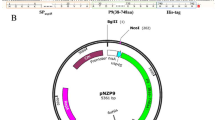Abstract
Beta-glucans, homopolysaccharides composed of 3,6-branching β-(1→3)-D-glucan chains, attract great interest as inducers of cytokine synthesis. In this work, we studied the ability of linear fragments of beta-glucan chains to activate cytokine synthesis. Synthetic nona-β-(1→3)-D-glucoside (SO) representing a linear fragment of beta-glucan chain, endotoxin (ED), and natural β-(1→3)-D-glucan (GL) were tested for their role as inducers of cytokines in whole peripheral blood cultures collected from 17 individuals. The concentrations of IL-12p70, IFN-γ, IL-2, IL-10, IL-8, IL-6, IL-4, IL-5, IL-1β, TNF-α, and TNF-β were measured in the supernatants after 2, 24, and 48 h of cell culturing. SO, ED, and GL stim- ulated production of pro-inflammatory IFN-γ, IL-1β, IL-2, IL-6, IL-8, TNF-α and anti-inflammatory IL-10. The high- est levels of biosynthesis after stimulation with SO were registered for IL-6, IL-8, and TNF-α. SO stimulated production of all cytokines (except IFN-γ) to a lesser extent than ED and GL. The IFN-γ/IL-10 (Th1/Th2) ratios after 24 and 48 h of culturing were 3.1 and 7.5 for SO; 0.03 and 0.1 for GL; and 0.06 and 0.2 for ED, respectively. The results indicate that lin- ear fragments of beta-glucans cause a more pronounced shift of immune response towards the pro-inflammatory (Th1) type than beta-glucan itself.
Similar content being viewed by others
Abbreviations
- ED:
-
endotoxin
- GL:
-
β-(1→3)-D-glucan
- SO:
-
synthetic nona-β-(1→3)-D-glucoside
References
Sakurai, T., Ohno, N., and Yadomae, T. (1994) Changes in immune mediators in mouse lung produced by administration of soluble (1–3)–β–D–glucan, Biol. Pharm. Bull., 17, 617–622.
Zang, K., and Petty, H. R. (1994) Influence of polysaccharides on neutrophil function: specific antagonists suggest a model for cooperative saccharide–associated inhibition of immune complex–triggered superoxide production, J. Cell. Biochem., 56, 225–235.
Chen, J., and Seviour, R. (2007) Medicinal importance of fungal beta–(1→3),(1→6)–glucans, Mycol. Res., 111, 635–652.
Lehne, G., Haneberg, B., Gaustad, P., Johansen, P. W., Preus, H., and Abrahamsen, T. G. (2006) Oral administration of a new soluble branched beta–1,3–D–glucan is well tolerated and can lead to increased salivary concentrations of immunoglobulin A in healthy volunteers, Clin. Exp. Immunol., 143, 65–69.
Kim, H. S., Hong, J. T., Kim, Y., and Han, S. B. (2011) Stimulatory effect of β–glucans on immune cells, Immune Netw., 11, 191–195.
Kurbatova, E. A., Vorobyev, D. S., Akhmatov, E. A., Akhmatova, N. K., Egorova, N. B., Tsvetkov, Yu. E., Sukhova, E. V., Yashunskii, D. V., and Nifantyev, N. E. (2014) Protective activity of glycoconjugate on the basis of synthetic hexasaccharide–related to the fragment of the chain of capsule polysaccharide from Streptococcus pneumoniae serotype 14, Byul. Eksp. Biol. Med., 157, 630–633.
Akhapkina, I. G., Zheltikova–Vostroknutova, T. M., Antropova, A. B., Egorova, O. V., Kalinkina, M. A., Yashunskii, D. V., Tsvetkov, Yu. E., Karelin, A. A., Nifantyev, N. E., and Mikhailova, N. A. (2015) Immunoenzyme test system for quantification of mycopolysaccharides and their derivatives in the dust of the environment, Patent No. 2543323 of 27.01.2015. RU. (Priority of 4.07.2013).
Akhapkina, I. G., Zheltikova, T. M., Antropova, A. B., Mikhailova, N. A., Yashunskii, D. V., Karelin, A. A., Khatuntseva, E. A., Tsvetkov, Yu. E., and Nifantyev, N. E. (2015) The development of methodological approaches to creation of reagents for immunoenzyme detection of linear β–(1→3)–glucans and their derivatives in the environment, Immunologiya, 36, 276–279.
Bohn, J. A., and BeMiller, J. N. (1995) (1–3)–β–D–glucans as biological response modifiers: a review of structure–functional activity relationships, Carbohydr. Polym., 28, 3–14.
Vetvicka, V., and Vetvickova, J. (2011) β(1–3)–D–glucan affects adipogenesis, wound healing and inflammation, Orient. Pharm. Exp. Med., 11, 169–175.
Kankkunen, P., Teirila, L., Rintahaka, J., Alenius, H., Wolff, H., and Matikainen, S. (2011) (1,3)–beta–glucans activate both dectin–1 and NLRP3 inflammasome in human macrophages, J. Immunol., 184, 6335–6342.
Kondo, Y., Kato, A., Hojo, H., Nozoe, S., Takeuchi, M., and Ochi, K. (1992) Cytokine–related immunopotentiating activities of paramylon, a beta–(1→3)–D–glucan from Euglena gracilis, J. Pharmacobiodyn., 15, 617–621.
Noss, I., Doekes, G., Thorne, P. S., Heederik, D., and Wouters, I. M. (2013) Comparison of the potency of a variety of β–glucans to induce cytokine production in human whole blood, Innate Immun., 19, 10–19.
Engstad, C. S., Engstad, R. E., Olsen, J. O., and Osterud, B. (2002) The effect of soluble beta–1,3–glucan and lipopolysaccharide on cytokine production and coagulation activation in whole blood, Int. Immunopharmacol., 2, 1585–1597.
Lee, Y. J., Paik, D. J., Kwon, D. Y., Yang, H. J., and Park, Y. (2017) Agrobacterium sp.–derived β–1,3–glucan enhances natural killer cell activity in healthy adults: a randomized, double–blind, placebo–controlled, parallel–group study, Nutrit. Res. Pract., 11, 43–50.
Teke, H. U., Cansu, D. U., Yildiz, P., Temiz, G., and Bal, C. (2017) Clinical significance of serum IL–6, TNF–α, Hepcidin, and EPO levels in anaemia of chronic disease and iron deficiency anaemia: the laboratory indicators for anaemia, Biomed. Res., 28, 2704–2710.
Bonlokke, J. H., Stridh, G., Sigsgaard, T., Kjaergaard, S. K., Lofstedt, H., Andersson, K., Bonefeld–Jorgensen, E. C., Jayatissa, M. N., Bodin, L., Juto, J. E., and Molhave, L. (2006) Upper–airway inflammation in relation to dust spiked with aldehydes or glucan, Scand. J. Work Environ. Health, 32, 374–382.
Chen, Y., Dong, L., Weng, D., Liu, F., Song, L., Li, C., Tang, W., and Chen, J. (2013) 1,3–β–glucan affects the bal–ance of Th1/Th2 cytokines by promoting secretion of anti–inflammatory cytokines in vitro, Mol. Med. Rep., 8, 708–712.
Sugiyama, A., Hata, S., Susuki, K., Yoshida, E., Nakano, R., Mitra, S., Arashida, R., Asayama, Y., Yabuta, Y., and Takeuchi, T. (2010) Oral administration of paramylon, a β–1,3–D–glucan isolated from Euglena gracilis Z inhibits development of atopic dermatitis–like skin lesions in NC/Nga mice, J. Vet. Med. Sci., 72, 755–763.
Author information
Authors and Affiliations
Corresponding author
Additional information
Original Russian Text © I. G. Akhapkina, A. B. Antropova, E. A. Akhmatov, T. M. Zheltikova, 2018, published in Biokhimiya, 2018, Vol. 83, No. 8, pp. 1259–1264.
Rights and permissions
About this article
Cite this article
Akhapkina, I.G., Antropova, A.B., Akhmatov, E.A. et al. Effects of the Linear Fragments of Beta-(1→3)-Glucans on Cytokine Production in vitro. Biochemistry Moscow 83, 1002–1006 (2018). https://doi.org/10.1134/S0006297918080114
Received:
Revised:
Published:
Issue Date:
DOI: https://doi.org/10.1134/S0006297918080114




